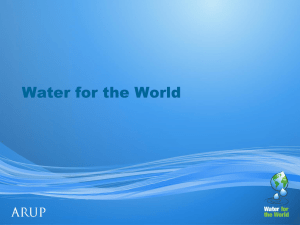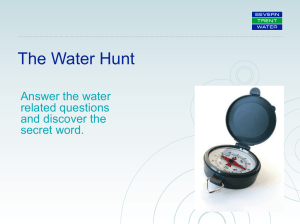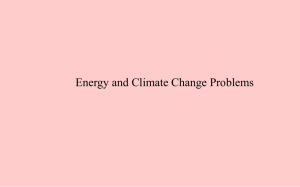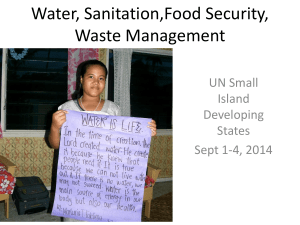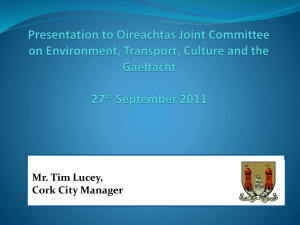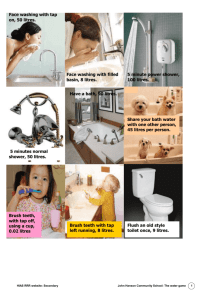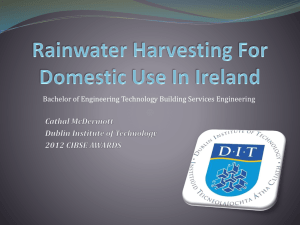Sustainable Development 5
advertisement
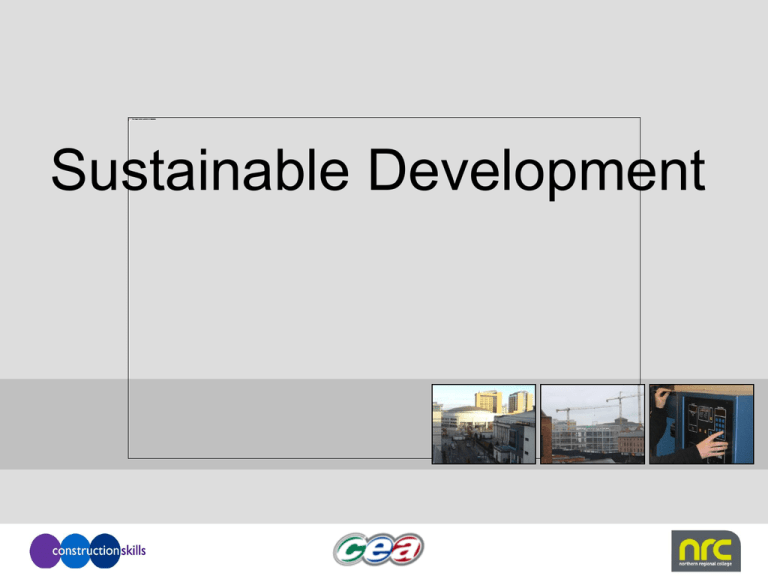
Sustainable Development Definition Sustainable Construction (also known as green construction or sustainable building) refers to a structure, the construction process and occupancy processes that are environmentally responsible and resource efficient throughout a building's life-cycle from location to design, construction, operation, maintenance, renovation, and demolition. What is Sustainable Construction? Sustainable Construction is development that meets the needs of the present without compromising the ability of future generations to meet their own needs. Sustainable construction should also: • Enhance living, working and leisure environments for individuals and communities. • Consume minimum energy over its life cycle • Generate minimum waste over its life cycle • Integrate with the natural environment • Use renewable resources where possible Sustainable Construction should NOT Sustainable construction should NOT: • Cause permanent damage to the natural environment or consume a large amount of resources during construction, use or demolition. • Cause unnecessary waste of energy, water or materials due to short life, poor design, inefficiency or low standard construction techniques. Sustainable Construction should NOT Sustainable construction should NOT: • Create dependence on high impact transport systems with their associated pollution. • Use materials from threatened species/environments. Environmental Considerations Water Conservation The following table shows the average household water usage in Ireland: Flushing the toilet 9.5 Litres Taking a bath 80 Litres Taking a shower 5 Litres/min Using a washing machine 80 Litres Watering the garden 540 Litres/hour Drinking water 10 Litres/day Environmental Considerations There are many ways to conserve water in the home. • Fit low flow taps and showerheads • Install Low flush toilets (3.5 to 6 Litres/flush) • Buy water efficient washing machines (faster spinning rate) • Think about shorter lengths of piping to hot water taps (reducing the amount of cold water run to waste) • Permeable landscaping materials absorb and retain rainwater, reducing watering. • Compost toilets use no flush water and the end product can be used as a fertiliser. • Natural reed beds are an alternative to conventional sewage systems. Large area of land required. Definition Greywater reuse (greywater is wastewater from wash basins, showers, washing machines) for watering the garden or washing the car. Rain Water Collection Rainwater can be used for gardening and toilet flushing. Install rainwater collection systems such as water butts for rainwater storage. Economic Benefits of Sustainable Building Economic benefits to Occupants • Cheaper operating costs since energy bills will be lower • Improved aesthetics and levels of comfort. Economic benefits to Lending Institutions • Since the owners will have lower operating costs more disposable income should be available to them • Therefore hopefully reducing the risk to lending institutions Economic Benefits of Sustainable Building Economic benefits to Builders • Lower landfill fees due to reuse and recycling of construction materials • Lower material costs with careful purchase of resources and materials • Potential earnings from sales of reusable items removed during the demolition of old buildings Economic Benefits to Landlords Economic benefits to Landlords • Warm dry homes have lower operating costs which causes fewer complaints to the housing associations • Well designed sustainable housing can reduce potential maintenance problems such as condensation • Sustainable housing should be more desirable than conventional homes, therefore minimising tenant turnover. Economic Benefits to Landlords Economic benefits to Landlords • Tenants of sustainable housing should have more money available to pay rent due to lower fuel costs. Sustainable Materials in Construction A useful indicator of the environmental impact of construction materials is Embodied Energy Embodied energy is the SUM of ALL the energy required throughout the lifecycle of a material That is energy in: • Acquisition of the raw material • Manufacture of the finished product • Transportation of the product to site • Construction of a building • Maintenance through the life of a building • Demolition of a building Good Environmental Design To reduce the Embodied Energy it is important to use a good design not only in the structure but also in the management and utilisation of materials. Timber frame construction can benefit this situation because: • Timber is a renewable resource • Timber has low embodied energy • Timber has good thermal properties • Timber has high strength to weight ratio Additionally we can design for standard lengths/sizes, choose salvage materials or choose long lasting low maintenance materials.

